December 10, 2013
True Master Sword
As of this blog entry, the most recent Zelda game to come out is The Legend of Zelda: A Link Between Worlds for the Nintendo 3DS. I have not played it yet, so my would-be opinion of the game does not factor into this at all. My all-time favorite Zelda game is Skyward Sword, and for quite a variety of reasons. I won’t go into them, but it definitely includes my favorite rendition of the Master Sword to date. It’s been on my “want to build” list, but there were just other, more readily-buildable, or more time-sensitive builds I needed to work on. Earlier this year, I was commissioned to build it (that is, what is referred to as the “True Master Sword” in the game), so now I had a need to build it, and I couldn’t be happier!
Anyways, the build isn’t really too much different from my previous Zelda sword builds, except for a few added techniques to achieve certain components. So a lot of this write-up will just highlight certain aspects of it as it’s really nothing new or anything terribly complicated.
To begin, I drew up some templates. Fortunately, there are lots of great references out there for this, which made drawing my templates easy. Keeping with my desire to make all my Zelda swords in-scale with each other, I landed on a final length of 40.5” long. At first, I thought that would be way too long, so I made a secondary template which had a blade that was 2” shorter. The visual loss was not significant enough to really matter, but in the end, it just didn’t feel right. Besides, it IS a long sword, after all. So I went with the original measurement of 40.5” long.
Speaking of my templates, and in case you were wondering, I print all my templates out on regular 8.5” by 11” cardstock. I could very well have them printed at Kinkos or something, but being able to piece it together on the spot makes scaling go a little quicker for me. On most builds, I may go through three or four templates before I decide it’s the right size (that is, if I don’t have anything else to base the measurements on). So in order to get parts to line up correctly, I draw a mess of thinner lines over the template so I can line them up in the light and then tape them together. A little messy, but it works just fine.
With my templates drawn and cut, I decided what needed to be made out of MDF and what didn’t, and then transferred my templates accordingly. Prior to cutting the templates out in the 1/4” MDF, I ran the MDF down a table saw to draw a central groove down what would become the interior of the blade, into which I would later insert a threaded rod for support later on in the build. Once the interior groove was cut, I decided 1/2” was just barely too thin, so I thickened it up with a layer of 2mm sintra sandwiched between each 1/4" sheet of MDF. I glued the stack together, and then cut it out on a scroll saw, after which I carved in the blade’s edges with my dremel and my power sander.
The cross guard proved a little tricky to carve, and there were multiple passes over it to get it just right. But in the end, the shape was actually just carved in with my dremel and an Xacto blade, and then sanded smooth. The wings would have to be added separately, so in order to get them perfectly symmetrical, I sculpted one (again, carved some MDF with my dremel and Xacto blade), made a mold, and cast two copies out of Smooth Cast 300 resin. While it’s a smaller component instead of the full cross guard, it’s the same exact thing I did on the previous Zelda swords to attain perfectly mirrored sides on an otherwise difficult to sculpt component. On a side note: A little trick I picked up from either Jarman Props, Zprops, or Punished Props (I can’t remember which!) is that if you’re working with MDF, coat your carved piece in super glue and let it soak in and dry. It really doesn’t take long, and when you sand it, you get a very hard, very smooth surface with nice, sharp edges. It’s such a neat trick that I used it throughout the build, and I encourage everyone out there following along to try it. You’ll be glad you did! Anyways, once the rest of the cross guard was sculpted, I measured out where the wings would sit according to my templates, and notched out the main cross guard. Then I inserted the wing castings and secured them in place with super glue and Apoxy Sculpt.
The cross guard wasn’t finished at that point, however, as I still needed to sculpt the jewel. However, before I did that, I needed to have the grip in place. To make the grip, I glued some scrap wood together (with a central groove in each piece of wood, in a similar manner to the blade) and chucked it up on the lathe. Using my template, it really didn’t take too terrible long to turn the grip. While it was on the lathe, I puttied it up and used the lathe to sand it perfectly smooth.
The grip wasn’t ready to install, though, as I still had a substantial amount of sculpting work to do on it. In order to get the grip’s weave feature sculpted, I taped out the wrap pattern on the grip (which was no small feat!), marked it with Sharpie, and removed the tape. Then I sculpted the grip weave on using Apoxy Sculpt. On a side note, I discovered that Skyward Sword’s concept artist intended for the green weave to be a grass-like material, and that really intrigued me. I had to add that feature to the sword. So while I was sculpting the pattern, I carved in several grooves along the bands of Apoxy Sculpt to give it somewhat of a grass-like texture. Separately, I added the pommel by using Apoxy Sculpt as well. Are you seeing a trend here? Apoxy Sculpt is kick ass.
After what felt like working on the handle for weeks and weeks and weeks (which realistically wasn’t the case), I was able to finally attach it to the rest of the sword. Here’s where that threaded rod comes in. gluing the rod into the blade first, I was able to easily line everything up and glue the grip in place. I ended up notching out the cone section of the grip so that it would fit snugly into place along the bottom side of the cross guard. Doing so made it so there was zero guess work in aligning the grip to the rest of the sword. With the grip in place, I could finally finish off the cross guard by adding the jewel. Again, to attain symmetry, I sculpted one jewel, molded it, and cast two copies.
When the final sculpt was cleaned up, it was ready for molding. It actually had a similar molding process to Pipit’s Sword, wherein I used MDF to help with the mold seam and reduce the amount of clay work I had to do. It was pretty standard two-part mold work. My rubber of choice was my go-to Rebound 25, and it took one entire “gallon kit” and most of a “trial kit” of the stuff to get it molded. Like the Goddess White Sword, I had to cut in several vent sprues to allow the resin to fill undercut areas. And like the other Zelda sword molds, the rubber parts in this mold would get clamped between two sheets of MDF during the casting process. In the last photo below, you'll notice that it's sitting in a trash can. The trash can is there in case there are any leaks or overflows during the casting process, so that the spilled resin is retained in the can and not all over my floor.
I wanted to try something I picked up from another prop builder, Matt Munson, since I had a lot of sharp edges I needed to capture. It’s not an uncommon trick, though, I just had never done it before, and with all the little shapes and nooks and crannies on this thing, I didn’t want to take any chances with bubbles. Before casting resin into the mold, I brushed in a coat of talc (in the form of baby powder). The talc works itself into all the hard-to-reach areas, and through capillary action, pulls the resin into those areas. This produces a super crisp casting, reducing bubbles that would normally appear in the castings to nearly zero.
I had some trouble casting this thing. I burned through a couple of castings that kept deforming in bizarre ways. Most resins shrink ever so slightly, and that’s normal. However, on larger items such as this, it can really cause adverse effects, especially if there is something impeding the shrinkage. Initially I had the same metal curtain rod cast into these as I did the Goddess White Sword. However, with the amount of resin the blade caused the weak metal to bend while it shrank, which caused the blades to curve. To fix that, I swapped out the cheapy metal curtain rod for a 3/8” steel threaded rod. The threading provides a mechanical connection to the resin, and the stronger steel prevents any flexing that the resin’s shrinkage would normally cause. The trade off, though, is that the steel rod is much heavier than the curtain rods, so the sword has some weight to it. It’s appropriate weight for being a sword, but it’s a little heavier than one would expect out of something that is made of plastic.
I also switched to a different resin for this sword. My go-to resin is Smooth Cast 300 for it's ease of use and it's quick curing time. It makes casting small things and slush casting helmets really quick and easy. However, it kicks a little too fast for something like this where I need a lot of working time, so I switched to Smooth Cast 305. It's the same exact resin, except that it has an added chemical to it that slows the curing process down, giving you more working time. The downside to it is that it seems degassing it would be beneficial, as there were quite a few air bubbles throughout that needed to be dealt with.
Anyways, after cleaning up the “steel rod” casting, I took to painting it. It wasn’t ever explicitly requested by the customer, but I made an assumption and chose to paint it up like the in-game version instead of the water-colory production artwork. This significantly reduced my painting time, as I was quickly approaching my due date. The blade got some Krylon spray can silver prior to any other paint work. Typically I don’t like using it, but if you let it dry for at least a full day, it doesn’t really retain finger prints. Then, I used my airbrush to apply custom-mixed acrylic paints to the grip. I did several passes over it in slight variations of the color to give it a neat shimmery look in different lighting. Next, I painted the grip weave by hand, and then further accented it with more airbrush work. After the grip was done, I misted some light blue at the base of the blade, fading it out half way up the blade. The jewels were painted in a metallic gold paint for the bulk of the jewels’ surfaces, and then they were coated in gold leaf Rub N Buff. The very slight brush texture from the paint caused the Rub N Buff to buff off in a slightly uneven manner, which gave it this neat, subtle “aged” look to it. To finish everything off, I gave it a couple coats of Spar Urethane clear coat.
This truly was a joy to build, and even though I only had the completed sword in my possession for a few days, the payoff was very rewarding.
Click here to go to the full Flickr photo set:
http://www.flickr.com/photos/2storyprops/sets/72157635205101916/
Subscribe to:
Post Comments (Atom)

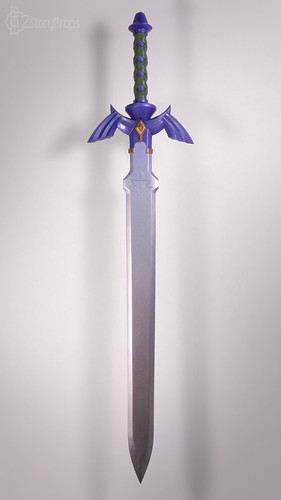
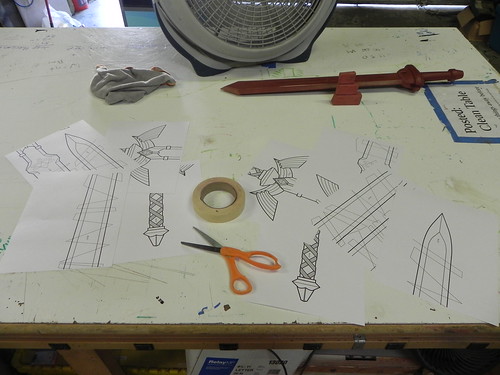
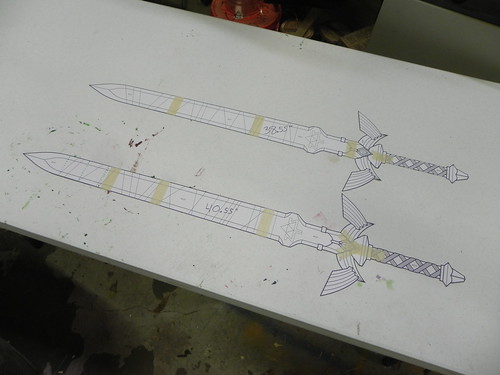

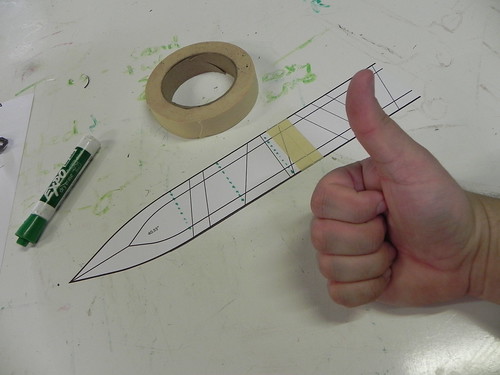
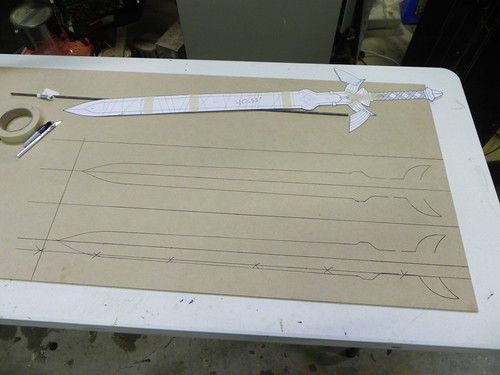
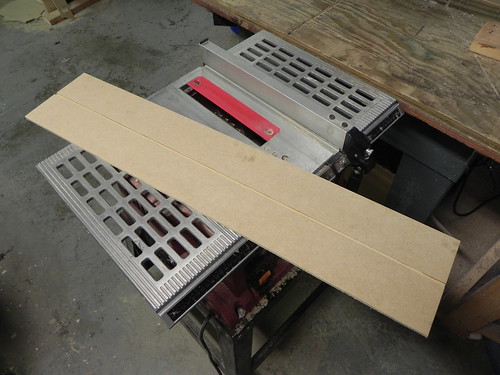

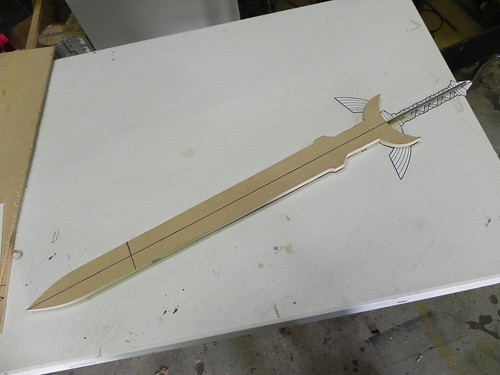
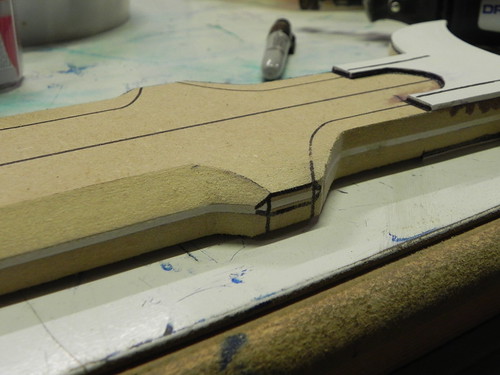
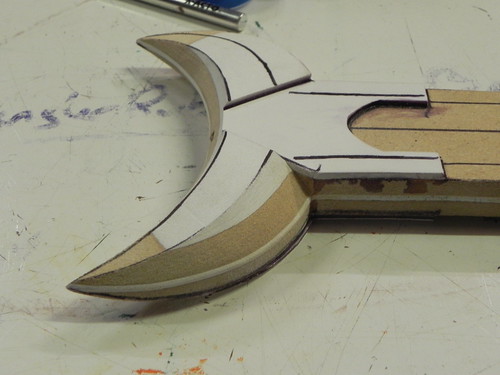
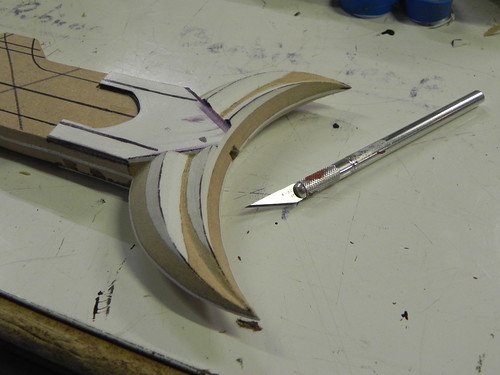
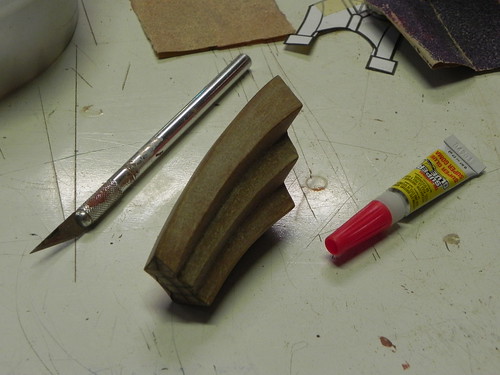
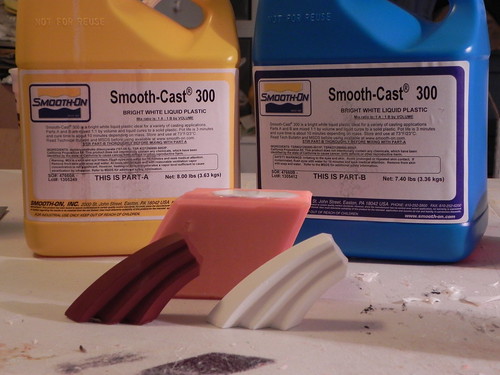
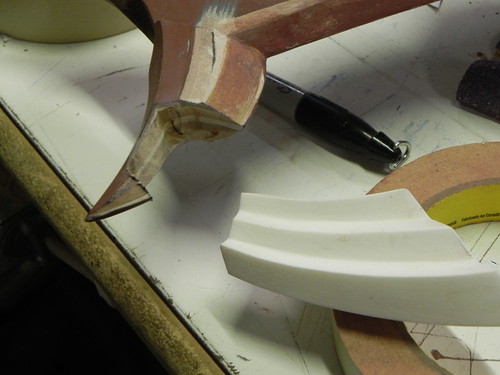
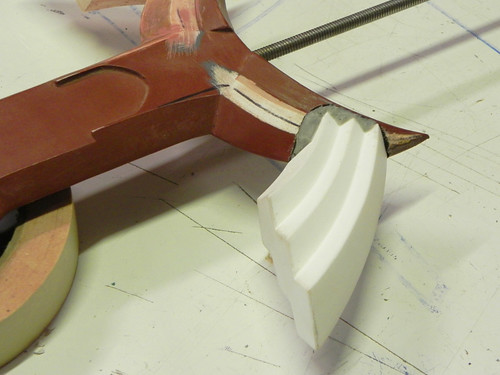
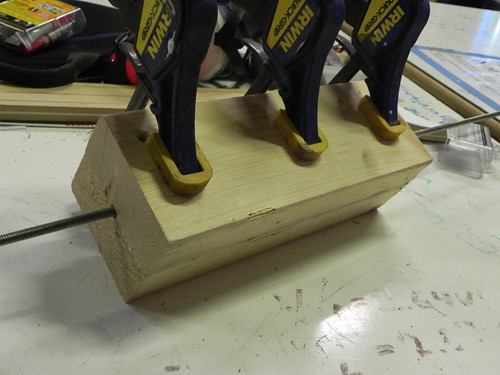
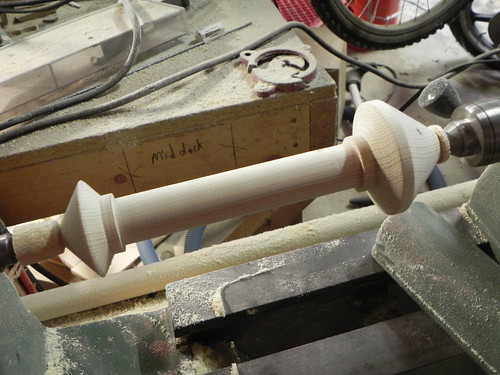
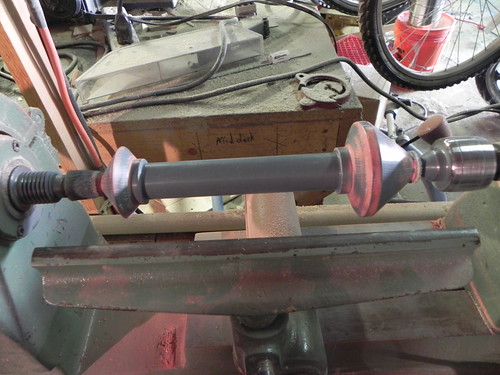
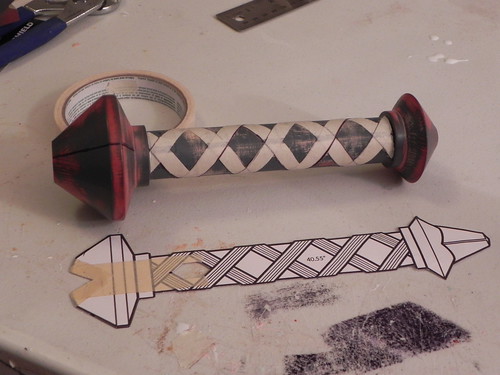

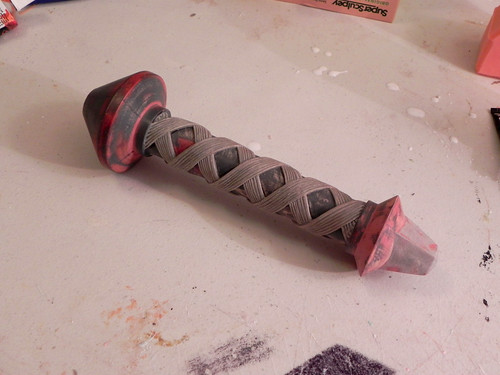
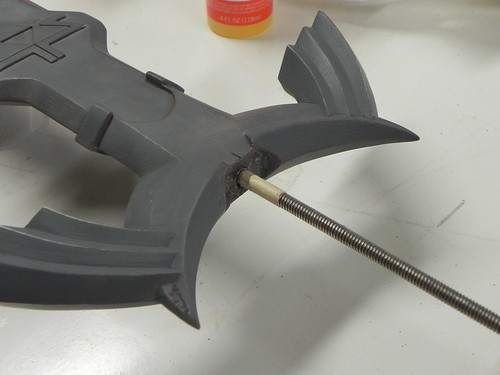
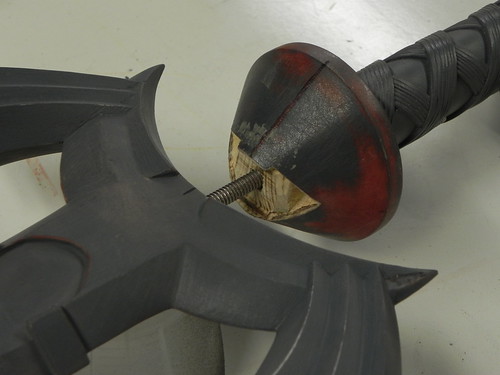
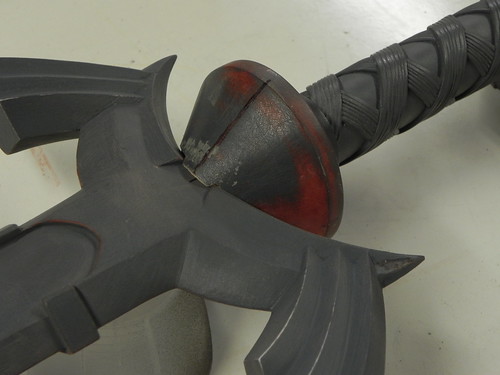
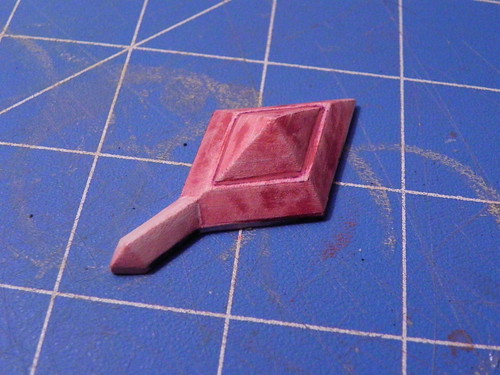

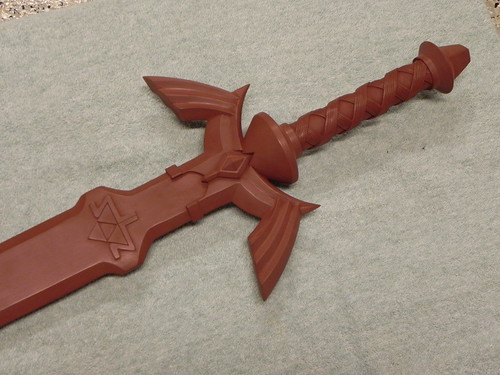

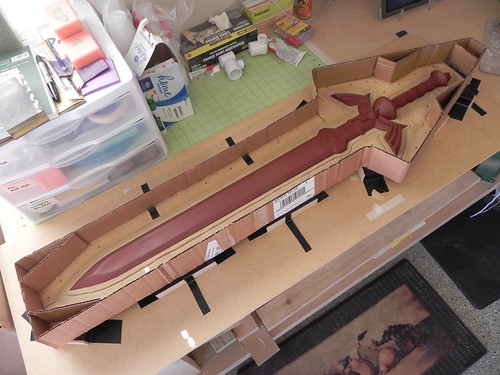
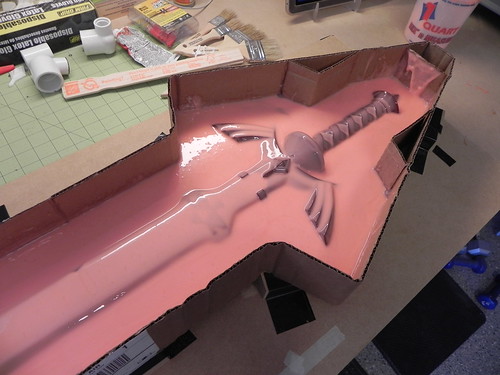

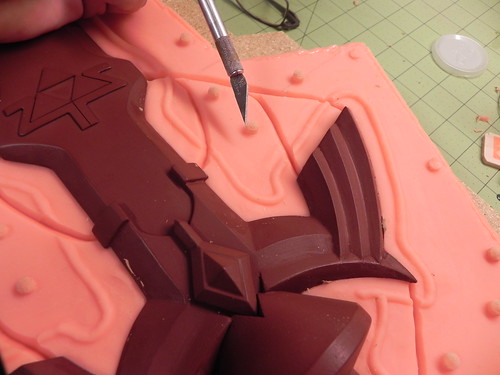
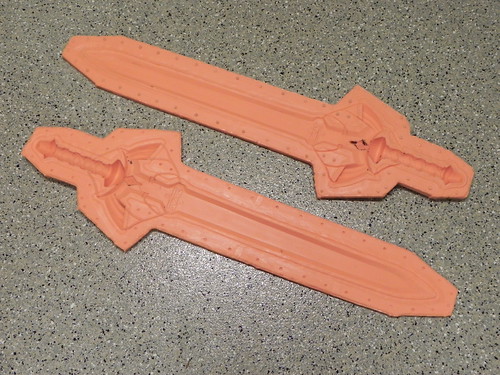


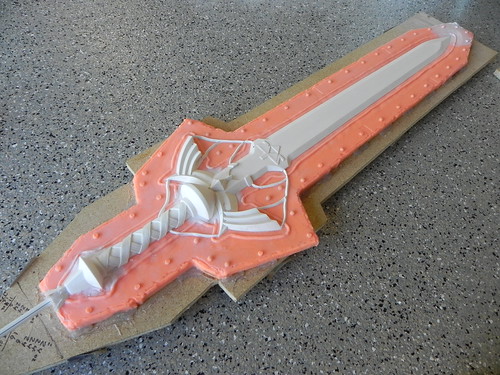
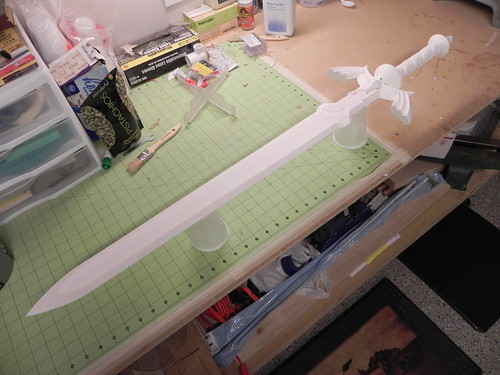
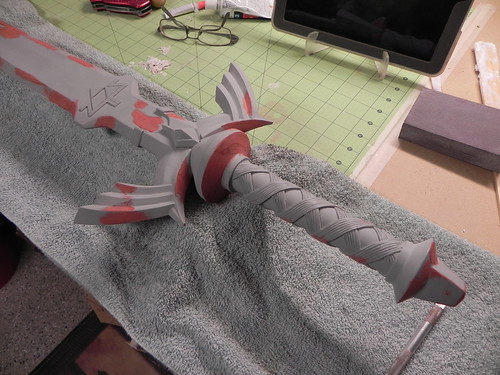
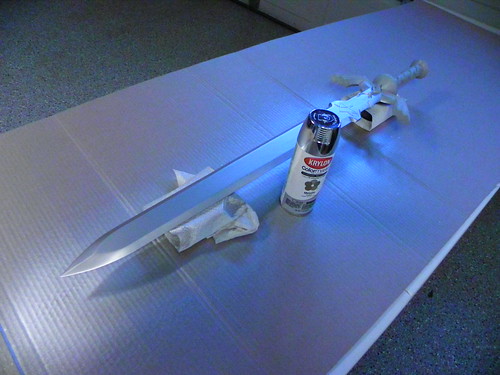
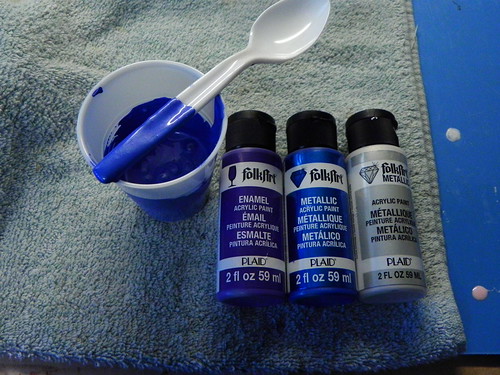
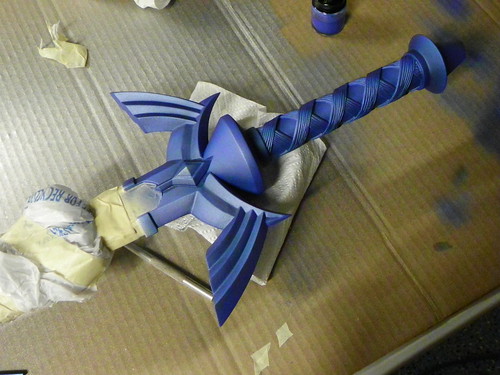
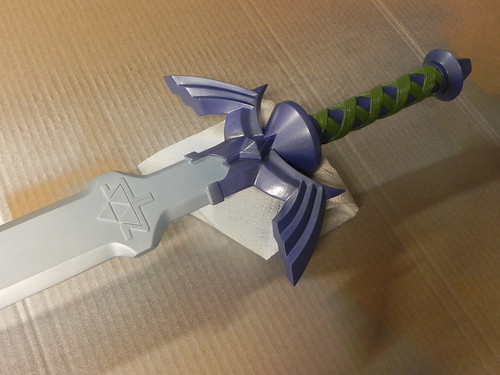
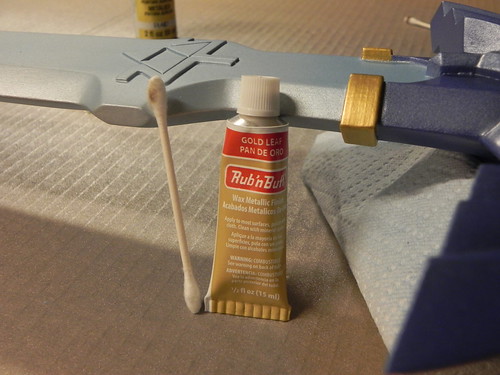
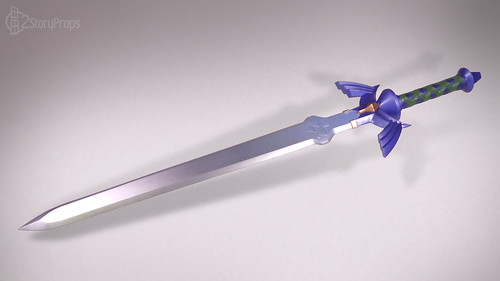
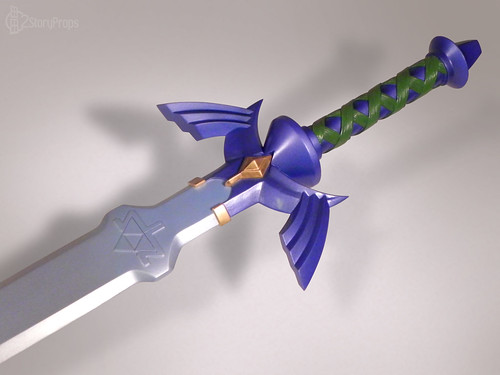
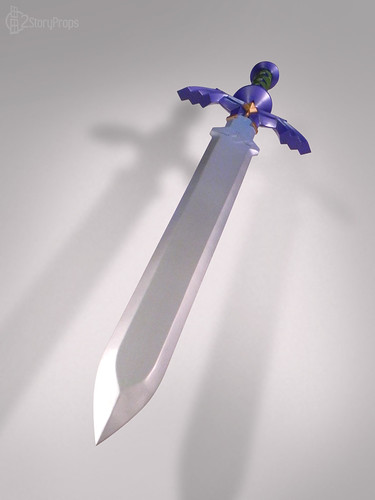

This is too cool. This is definitely on my build-list for one of these days. Maybe as soon as I'm done with my Majora's Mask, but whenever I get around to it, I hope it would come out just a mere fraction of how good this came out.
ReplyDeleteCan you get me a materials list so I can make my own?
ReplyDeleteWhere did you get the template for the master sword?
ReplyDeletevery nice post. it's amazing. but i want <a herf="http://www.knivesdeal.com/Buy_Zelda_Shields_Swords>buy zelda sword</a>
ReplyDeleteI done with my Master Sword and Hylian Shiel out of cardboard but this is better!
ReplyDeleteThank you for sharing this information with us. i also want Wholesale Wooden Swords or Buy Zelda Sword so help me and guide me if you can provide.
ReplyDeleteHello...!
ReplyDeleteKnives & Guns you can buy Wholesale Knives and Swords from Wholesale Knives.